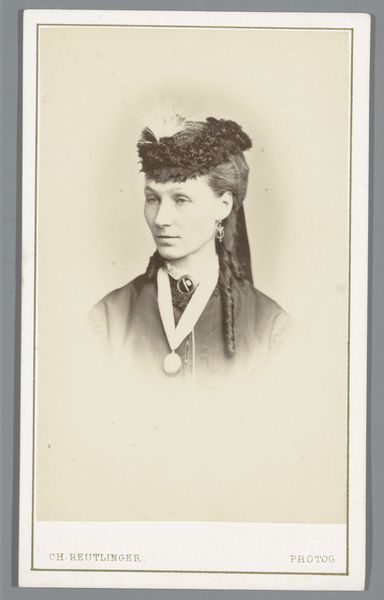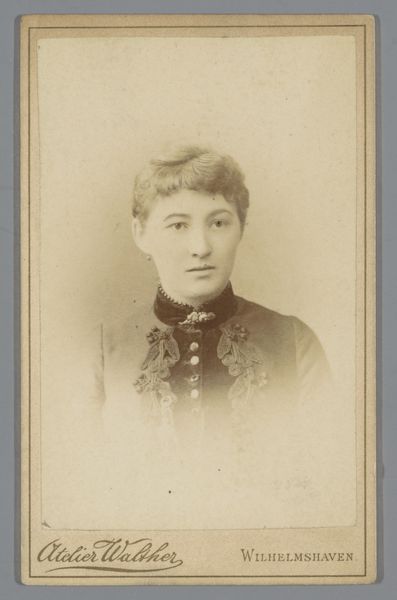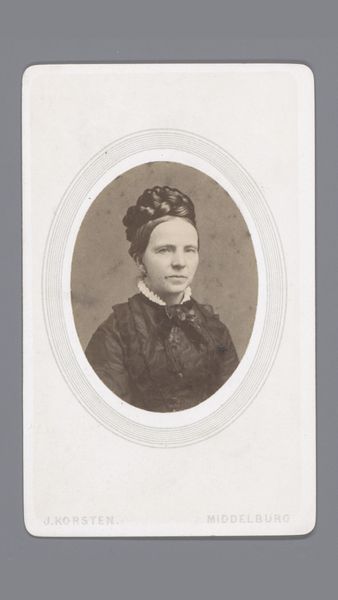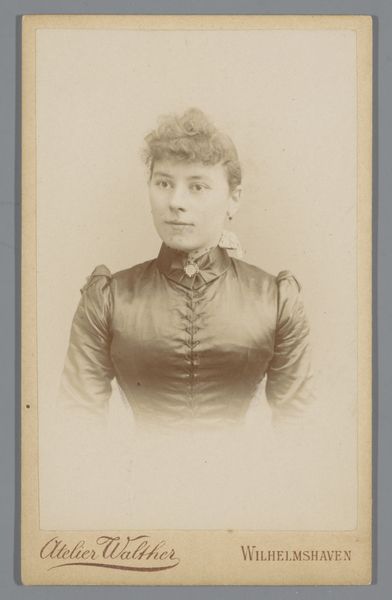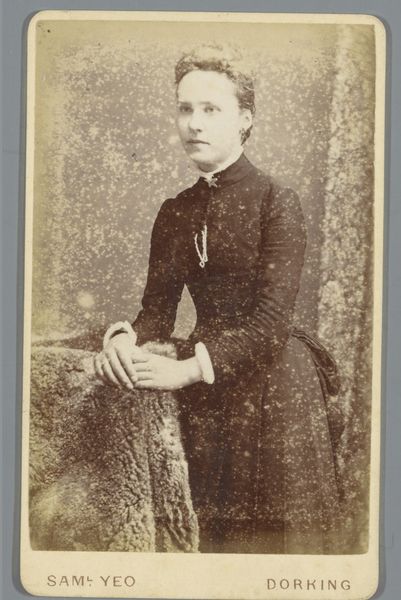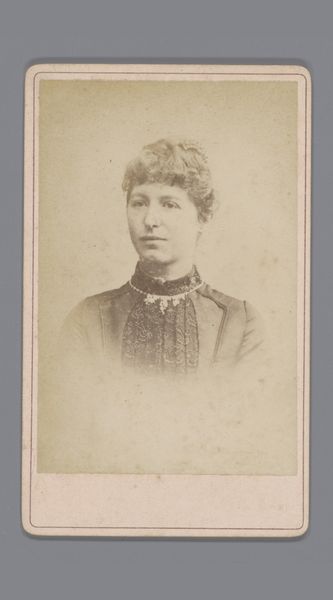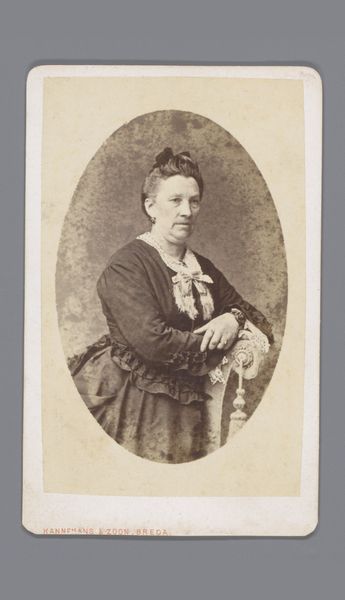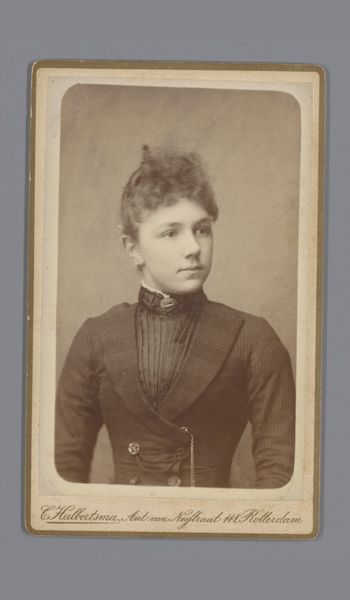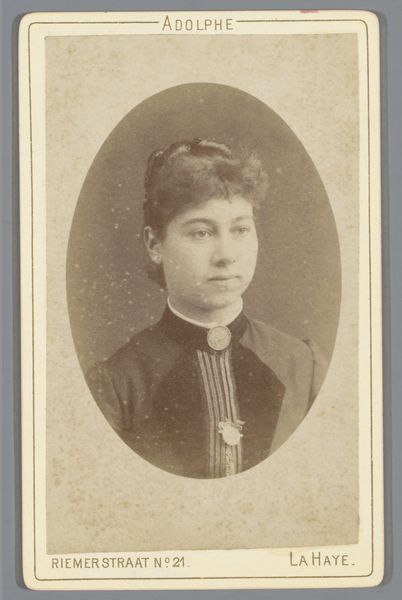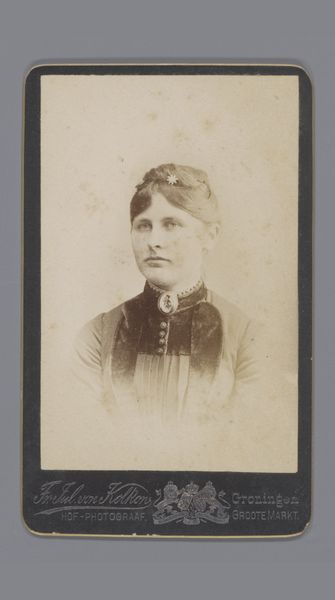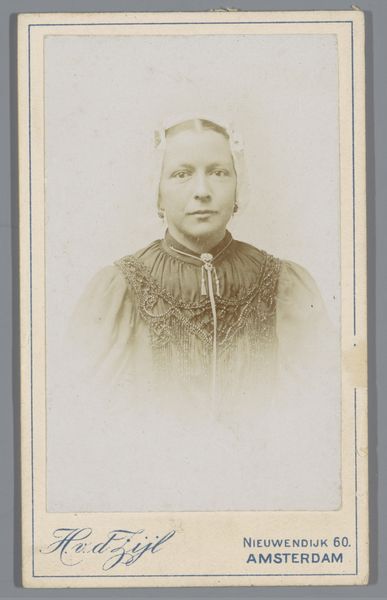
photography, gelatin-silver-print
#
portrait
#
historical design
#
caricature
#
photography
#
historical fashion
#
portrait reference
#
gelatin-silver-print
#
19th century
Dimensions: height 106 mm, width 63 mm
Copyright: Rijks Museum: Open Domain
Editor: Here we have Charles Reutlinger's "Portret van een onbekende vrouw," a gelatin silver print made sometime between 1867 and 1880. The woman's hat is really striking, but the photographic print itself feels so fragile. What’s your take on it? Curator: This work allows us to consider photography as a manufactured object, just like any other. Notice the gelatin silver print – a process relying on specific chemical and industrial developments of the time. It wasn’t just about pointing a lens; it was a complex system of labor and materials. Editor: That makes sense. I hadn't thought about it as an industrial product, but you're right. The availability of those chemicals and the paper stock… So, the act of making portraits became more accessible? Curator: Exactly. Think about the materials sourced for this image. The silver itself, the gelatin – where did those come from? Who processed them? This wasn't a solitary artistic endeavor; it involved entire economies and hierarchies of labor. The studio photographer often operated less like an individual artist and more like a manager in a small-scale production line. What does the mass production of photographs like this say about art and access in the late 19th century? Editor: Wow, it really reframes how I see it. I was focused on the subject's clothes and jewelry, maybe a little too eager to think about this photograph as art instead of considering its place in material culture. Curator: And those choices—the jewelry, the fabric of her dress, the dyes used to color them—those all had material origins too, rooted in colonial extraction, industrial manufacturing, and changing patterns of consumption. Editor: This has been a reminder that appreciating art is not just about aesthetics but the material realities that underpin it. Thanks! Curator: Indeed. Focusing on the processes of art production allows us to analyze power structures, economic exchange, and social relationships within a specific period.
Comments
No comments
Be the first to comment and join the conversation on the ultimate creative platform.
